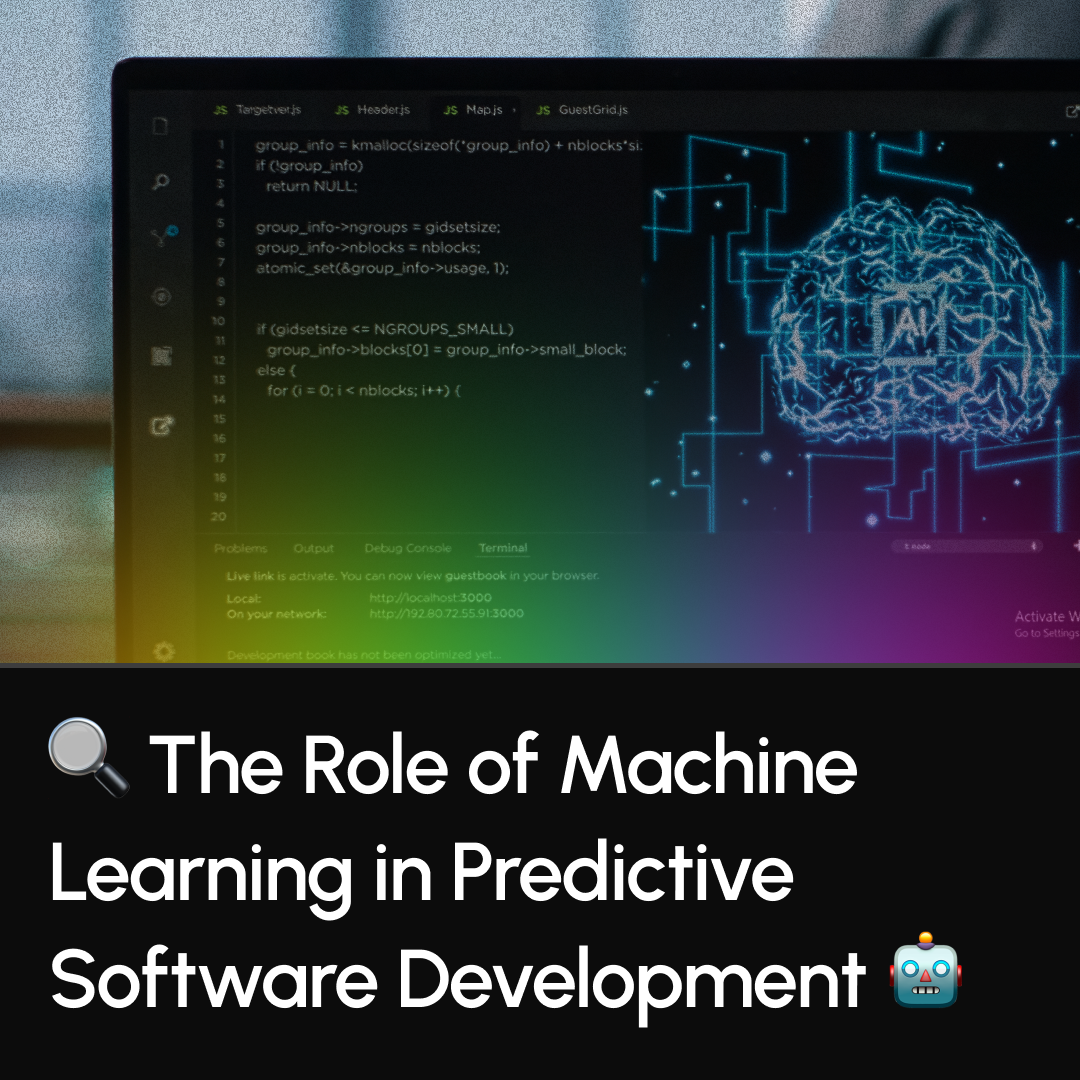

In today’s fast-paced world of software development, staying ahead of potential issues and improving user experiences is crucial. That’s where Machine Learning (ML) steps in. Machine learning is transforming the way developers approach software creation by enabling predictive capabilities that enhance quality, speed, and reliability.
Machine learning, a branch of artificial intelligence, uses algorithms to analyze vast amounts of data, identify patterns, and predict outcomes. When integrated into software development, it empowers developers to foresee potential problems, optimize performance, and improve decision-making throughout the development lifecycle. Let’s dive into the significant role ML plays in predictive software development.
1. Predicting and Preventing Software Bugs
One of the most powerful uses of machine learning in software development is its ability to predict and prevent bugs. Traditional debugging often requires manual testing, which can be time-consuming and inefficient. With machine learning, algorithms can analyze historical data and code behavior to identify patterns that may lead to bugs or performance issues.
By predicting these problems before they arise, machine learning enables developers to address potential issues proactively. This reduces the time spent on debugging and ensures that the software is more reliable before it’s released. Essentially, it helps create a smoother development process and a better user experience.
2. Optimizing Software Performance
Another significant advantage of machine learning is its ability to optimize software performance in real-time. By continuously analyzing data, ML algorithms can identify areas where software can be made more efficient, whether it's optimizing memory usage, load times, or responsiveness.
For example, in mobile app development, machine learning can help improve battery usage by predicting which parts of the app need more processing power and which can be streamlined. This leads to a more efficient and seamless user experience without sacrificing performance.
3. Enhancing User Experience Through Personalization
Predictive software development powered by machine learning also enables better personalization of user experiences. By analyzing user behavior data, machine learning algorithms can anticipate users’ needs, preferences, and actions, allowing software to adapt in real-time.
For instance, in e-commerce platforms, machine learning can predict the products a user is likely to be interested in based on their past browsing and purchasing history. By integrating these insights, developers can create a more personalized and engaging experience that encourages user retention and satisfaction.
4. Automating Testing and Continuous Improvement
Machine learning is also making waves in automating the testing phase of software development. By using predictive models, ML can identify the most likely areas where errors will occur and focus testing efforts on those regions. This reduces manual effort, accelerates the testing process, and helps catch bugs more efficiently.
Furthermore, the more data and feedback ML algorithms receive, the smarter they become. As developers continue to work on the software, machine learning models refine their predictions and improve their ability to anticipate issues, leading to a cycle of continuous improvement.
5. Enabling Smarter Decision Making
The insights provided by machine learning allow developers to make smarter, data-driven decisions throughout the software development process. Whether it’s prioritizing features, optimizing workflows, or choosing the right technologies, ML enables decision-makers to base their strategies on solid data rather than gut feeling or guesswork.
By integrating ML into the development process, companies can reduce the risks associated with software development and improve the efficiency of their teams. ML empowers developers to focus on the most important tasks, streamlining the entire process and enabling faster delivery of high-quality software.
Conclusion: The Future of Predictive Software Development
Machine learning is changing the way software is developed, and its impact on predictive development is only set to grow. From predicting bugs and optimizing performance to personalizing user experiences and automating testing, the potential of ML in software development is vast.
As businesses continue to adopt machine learning in their development processes, we’ll see more innovative, efficient, and user-centered software solutions. By harnessing the power of machine learning, developers can not only enhance their workflow but also deliver products that are smarter, more reliable, and ready for the future.
Are you ready to incorporate machine learning into your software development process? Start exploring the possibilities today and stay ahead of the curve!
